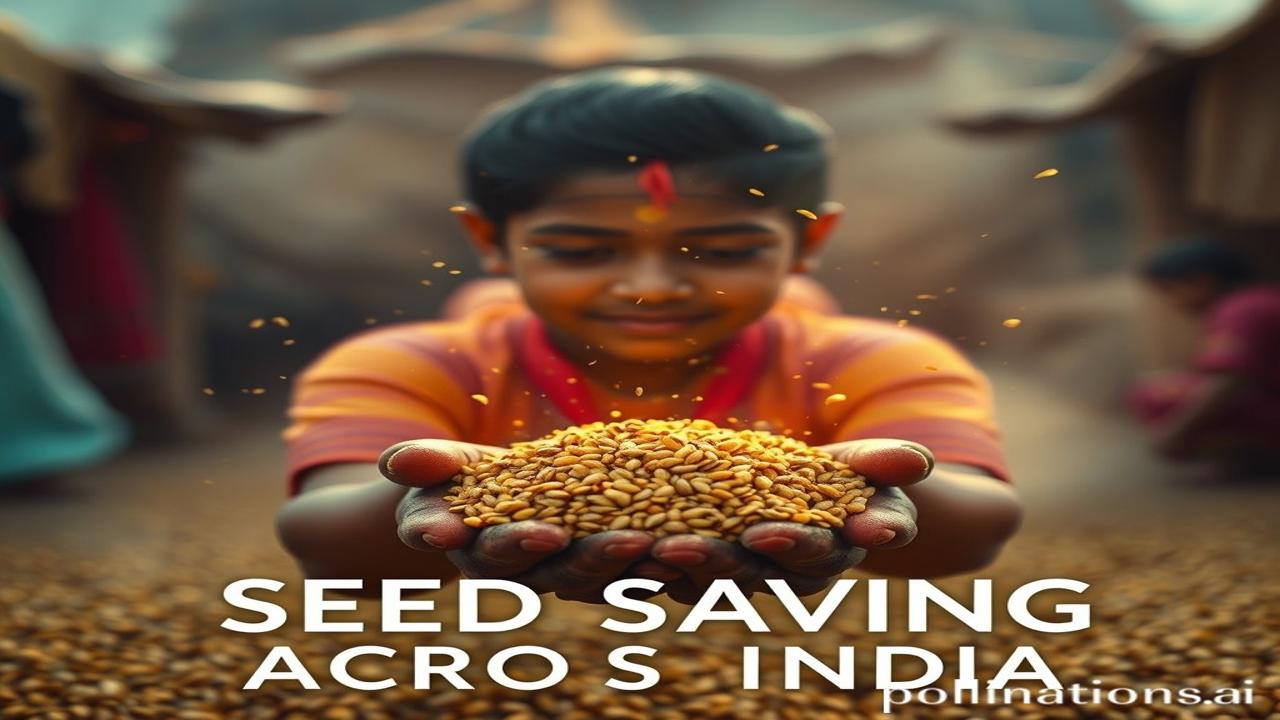Waqt ke Beech Bikhri Dharti: Seed Saving Traditions Across India
Kabhi socha hai, ki woh beej, jo aaj hum bo rahe hain, kitni peedhiyon ki mehnat, kitni kahaniyon ka hissa hai? Imagine the fragrance of the earth after the first monsoon showers, the vibrant colours of freshly harvested crops, and the collective sigh of relief from families knowing their granaries will be full. But beneath all this lies a quiet, often forgotten practice: seed saving. This isn’t just about agriculture; it’s about preserving our history, our culture, our very identity. Let’s delve into the dusty archives of India, to uncover the rich tapestry of seed saving traditions.
Bharat Ki Dharohar: Seed Saving – Itihas Aur Mahatva (India’s Heritage: Seed Saving – History and Importance)
Seed saving, or beej sanrakshan, is the practice of collecting, drying, and storing seeds from crops to be used for planting in future seasons. This tradition, deeply rooted in India’s agrarian society, dates back thousands of years. It’s not just a technique; it’s a way of life, a sacred duty passed down through generations.
Think about it: Before the advent of commercial seed companies, farmers relied entirely on their own saved seeds. These seeds, carefully selected for their resilience, yield, and flavour, were adapted to the local climate and soil conditions. This process ensured food security and maintained the genetic diversity of crops. Each beej held within it the stories of seasons past, of triumphs and failures, of the land itself. This knowledge, this gyan, was invaluable.
Gaon Ki Jindagi: Beej aur Kisan (Village Life: Seeds and Farmers)
Imagine a typical Indian village scene, say, around 200 years ago. The air is thick with the aroma of wood smoke and freshly baked roti. A farmer, Ramlal, his hands calloused from years of tilling the land, carefully examines his harvested crops. He’s looking for the best, the strongest, the healthiest.
“Yeh dekho, beti,” he says to his daughter, Sita, pointing to a particularly plump ear of corn. “Iske beej hum agli fasal ke liye rakhenge. Iski maangal varsha mein bhi achchi fasal hui thi.” (Look, daughter, we will save the seeds of this corn for the next harvest. It yielded a good crop even during the torrential rains).
Sita nods, her eyes filled with respect for the wisdom of her father. She knows that these seeds are not just commodities; they are the future of their family, their village. They carefully separate the seeds, drying them in the sun and storing them in clay pots, protecting them from pests and moisture. It was a ritual, a sacred act of faith in the cycles of nature.
Ajj Ki Dharohar: Bharatiyata Aur Seed Saving (Today’s Heritage: Indianness and Seed Saving)
Today, in the age of globalization and hybrid seeds, the tradition of seed saving is slowly fading. But, its importance remains as relevant as ever. Preserving indigenous seed varieties is crucial for maintaining biodiversity, ensuring food security, and safeguarding our cultural heritage.
Many NGOs and community-based organizations are working to revive this tradition. Farmers are being encouraged to save their own seeds, participate in seed exchanges, and cultivate traditional crop varieties. This is not just about preserving seeds; it’s about preserving our Bharatiyata, our connection to the land, and our deep-rooted agricultural heritage.
Imagine a farmer in Rajasthan today, proudly holding up a handful of Bajra seeds, knowing that they have been passed down through his family for generations. He is not just planting seeds; he is planting history, culture, and resilience. He is reaffirming his connection to the land and his commitment to preserving a vital part of India’s heritage.
Mazedar Tathya: Beejon Mein Chhupi Kahani (Fun Fact: Stories Hidden in Seeds)
Log samajhte hain ki hybrid beej se jyada upaj hoti hai, lekin asli sach yeh hai ki kai desi beej, sahi dekhbhal ke saath, hybrid beej se behtar upaj de sakte hain aur woh local conditions ke liye behtar anukool hote hain. (People believe that hybrid seeds yield more, but the real truth is that many indigenous seeds, with proper care, can yield better than hybrid seeds and are better adapted to local conditions.) Furthermore, saving seeds helps farmers become self-reliant, reducing their dependence on expensive commercial seeds.
Drisya aur Bhavnayein: Dharti ki Mahak (Visuals and Emotions: The Fragrance of the Earth)
Close your eyes. Imagine the smell of sun-baked earth, mixed with the sweet fragrance of ripe mangoes hanging heavy on the branches. Hear the rhythmic sound of the bullock cart slowly creaking along the dusty road, the distant chants from the nearby temple, and the laughter of children playing in the fields. Feel the warmth of the sun on your skin, the rough texture of the soil between your fingers, and the satisfaction of knowing that you are a part of something ancient and enduring. The smell of mitti after the monsoon is a smell of hope, of life, of shakti.
Antim Vichar (Closing Thought)
Seed saving is more than just a agricultural practice; it is a cultural legacy, a testament to the wisdom of our ancestors, and a vital tool for ensuring food security and preserving biodiversity. As the famous Sanskrit shloka says: “Vasudhaiva Kutumbakam” (The world is one family). In preserving our seeds, we are preserving the very fabric of our global family, ensuring that future generations can inherit a world rich in diversity and resilience. Let us remember the beej that connect us to our past, and plant them with hope for the future.
